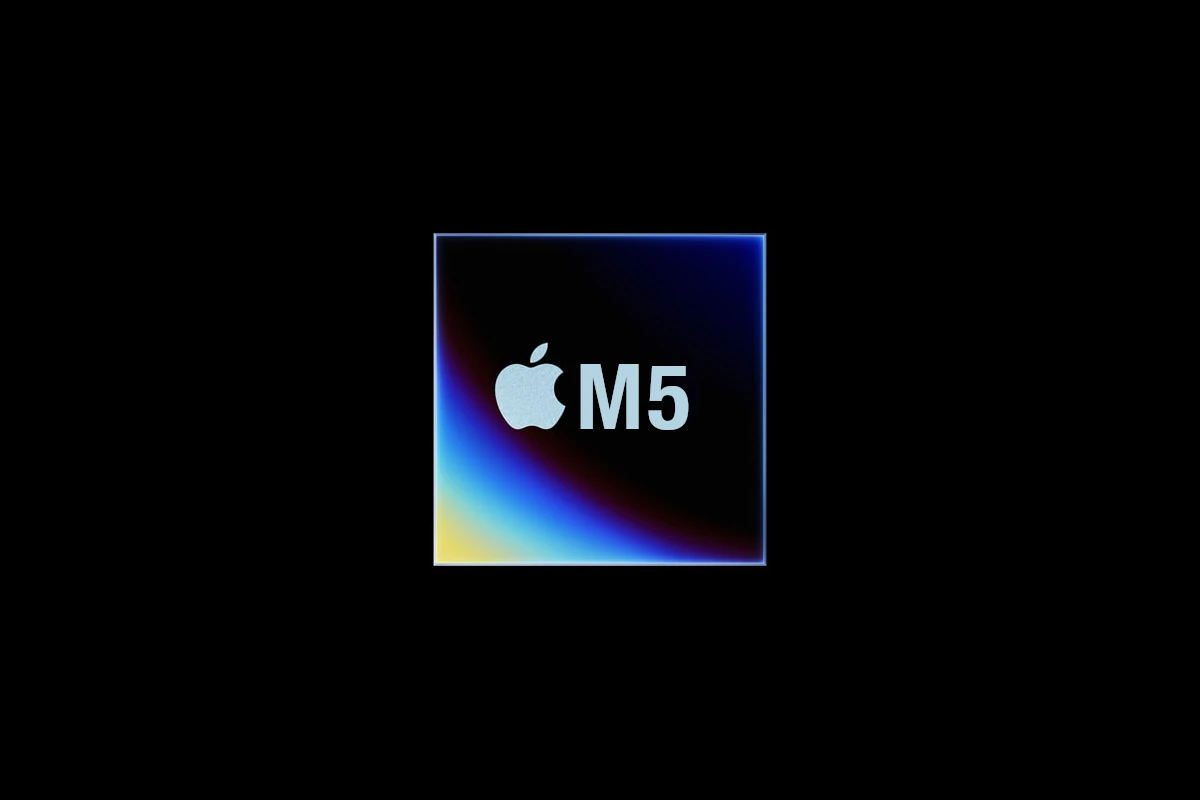Apple is preparing to supercharge its iPad Pro lineup once again, this time with the introduction of the next-generation M5 chip. According to multiple reports and insider leaks, the upgraded iPad Pro models are slated to arrive in late 2025—likely around October—alongside new M5-equipped MacBook Pros. This marks another step in Apple’s strategy to bring Mac-level performance to the iPad, positioning it as a true productivity powerhouse.

A Significant Step Up from the M4
While the M4 chip—released in the May 2024 iPad Pro—already delivered notable gains in speed and energy efficiency, the M5 is expected to push the performance envelope further. Built on TSMC’s refined 3nm N3P process, the M5 chip should offer better thermal management, improved battery life, and up to 25% faster CPU and GPU performance compared to the M4. Early developer logs and leaked benchmarks suggest the M5 will also deliver better on-device AI processing, aligning with Apple’s broader focus on artificial intelligence across its ecosystem.
For users who passed on the M4 models—or regretted buying in too early—the M5 iPad Pro could be the upgrade worth waiting for.

Hardware: Familiar Design, Smarter Internals
Don’t expect dramatic design changes this time around. The M5 iPad Pro is likely to retain the ultra-thin chassis, OLED displays, and landscape-oriented front camera introduced with the M4 models. However, Apple is reportedly testing a few refinements:
- Wider Availability of Nano-Texture Glass: Previously reserved for top-tier storage configurations, nano-texture glass may now be offered across the board, giving more users access to reduced glare and enhanced viewing in bright environments.
- Updated Internals: Alongside the M5 chip, Apple could introduce improved thermal management or enhanced battery architecture, especially as power efficiency becomes a selling point for demanding users like video editors and 3D designers.
Software: iPadOS 19 to Close the Gap with macOS
The M5 iPad Pro is expected to debut with iPadOS 19, which insiders say will bring a suite of enhancements aimed at professional workflows. Features like windowed multitasking improvements, expanded support for external displays, and more robust Stage Manager options are likely. Combined with the M5’s raw power, iPadOS 19 could make the iPad Pro an even more viable laptop replacement—particularly for creatives, coders, and digital nomads.
Storage, Pricing, and Availability
Apple is expected to maintain its current storage tiers, starting at 256GB and going up to 2TB, which aligns with the M4 iPad Pro offerings. Pricing should also remain in familiar territory:
| Model | Expected Starting Price |
|---|---|
| 11-inch M5 iPad Pro | $999 |
| 13-inch M5 iPad Pro | $1,299 |
However, market conditions—such as global tariffs or component costs—could still affect final pricing.
Why This Upgrade Matters
The M5 iPad Pro may not bring sweeping physical changes, but it signals Apple’s commitment to making the iPad Pro more than just a premium tablet. Between the new chip, enhanced software, and refined features, this update could tip the scales for those still on the fence about replacing their laptops with an iPad.
If you’ve been waiting for a true leap in capability, rather than just an incremental spec bump, the M5 iPad Pro is shaping up to be one of the most powerful and future-proof Apple tablets ever released.
Key Takeaways
- The iPad Pro with M5 chip will arrive in late 2025 with major performance gains over current models.
- Apple will keep the same form factor but may expand premium features to more affordable configurations.
- The update creates a strong upgrade path for creative professionals seeking more powerful mobile computing options.
M5 Chip Upgrade and Its Impact on the iPad Pro Lineup
The upcoming M5 chip represents a significant leap forward for the iPad Pro, bringing enhanced processing power, improved architecture, and better energy management to Apple’s flagship tablet.
Performance Advancements in CPU and GPU
The M5 chip is expected to deliver remarkable performance improvements over its predecessors. Early leaks suggest the CPU could be up to 30% faster than the previous generation, making complex tasks smoother and more responsive.
Graphics capabilities will see a substantial boost as well. The enhanced GPU architecture will likely support higher resolution rendering and more complex visual effects. This means better gaming experiences and smoother video editing.
Professional apps will benefit greatly from these improvements. Software like Final Cut Pro, Photoshop, and 3D modeling applications will run more efficiently, making the iPad Pro an even more viable laptop replacement for creative professionals.
The neural engine is also expected to receive significant upgrades, improving machine learning tasks and AI features that are becoming increasingly important in professional workflows.
Next-Generation Apple Silicon Architecture
The M5 represents the next evolution in Apple’s silicon design philosophy. Building on the success of earlier chips, the M5 adopts a more advanced manufacturing process, likely 3nm technology.
This smaller process allows Apple to pack more transistors into the same space, improving both performance and efficiency. The architecture may include more performance and efficiency cores than previous designs.
Reddit discussions suggest the M5 iPad Pro will maintain the same form factor while delivering substantial internal improvements. This approach follows Apple’s pattern of refining proven designs with significantly better components.
The memory architecture is also expected to improve, with faster bandwidth and potentially higher capacity options for pro users. This addresses one of the previous limitations when working with large files or multiple apps.
Efficiency and Battery Life Enhancements
Despite the increased performance, the M5 chip promises better power efficiency. Reports indicate the new iPad Pro will maintain its impressive 10-hour battery life even with the more powerful processor.
This efficiency comes from several improvements. The advanced manufacturing process naturally reduces power consumption. Apple has also likely refined power management systems to better balance performance and battery preservation.
New low-power states may allow parts of the chip to sleep when not in use, further extending battery life. This is particularly important for professionals who need their device to last through a full workday.
The thermal design has likely been improved as well, allowing sustained performance without throttling. This means consistent performance even during long, demanding tasks like video rendering or complex calculations.
These improvements make the M5 iPad Pro an even more practical tool for professionals who need both power and portability in their daily workflow.
Expanded Pro Capabilities and Industry Implications
The M5 chip represents a significant leap forward for the iPad Pro lineup, bringing substantial performance gains that will reshape how professionals use these devices. These improvements extend beyond raw processing power to affect displays, connectivity options, and the iPad Pro’s position in Apple’s broader ecosystem.
Professional Features Enhanced by M5
The M5 chip will dramatically improve professional workflows on iPad Pro. Video editors can expect faster rendering times with the M5’s enhanced GPU performance. This means 4K and even 8K video editing will become more practical on the tablet.
Artists and designers will benefit from better Apple Pencil responsiveness. The M5’s neural engine improvements mean faster AI processing for features like object removal and smart selection.
Software developers get a boost too. Xcode on iPadOS will run more efficiently, making on-the-go app development smoother. The chip’s performance headroom means apps like Photoshop, Lightroom, and Final Cut can offer more desktop-class features.
For 3D modeling professionals, the M5 will handle complex models with less lag. This makes the iPad Pro a more viable alternative to specialized workstations for many tasks.
OLED Display and 120Hz ProMotion Improvements
The new iPad Pro models will pair the M5 chip with advanced OLED displays. These screens offer true blacks, better color accuracy, and improved contrast ratios – critical for photo and video professionals.
The 120Hz ProMotion technology gets smarter with the M5 chip. The display can now adjust refresh rates more dynamically based on content, saving battery life while maintaining smoothness.
HDR content will look dramatically better. The OLED panels support higher brightness levels for HDR highlights while maintaining deep blacks. This makes the iPad Pro better for both creating and viewing professional content.
For designers, the improved color accuracy means what you see on screen will match print materials more closely. The displays will also feature better anti-reflective coatings for outdoor use.
Connectivity: Thunderbolt 5, 5G Modem, and More
Thunderbolt 5 support stands out as a major upgrade. With transfer speeds up to 80 Gbps, professionals can move large files like 8K video footage much faster than before.
The new 5G modem improves both speed and reliability for on-the-go work. This means smoother video calls and faster cloud syncing even when Wi-Fi isn’t available.
External display support gets better too. The M5 iPad Pro can drive multiple high-resolution displays simultaneously, making it more viable as a desktop replacement.
Peripheral compatibility expands with the M5. Professional tools like color calibrators, audio interfaces, and specialized input devices will work better with iPadOS. This removes barriers that previously pushed professionals toward MacBooks.
Wi-Fi 7 support means faster local network transfers. This helps studios with asset servers or networked rendering.
Relationship to Mac Lineups and Other Apple Devices
The M5 iPad Pro narrows the performance gap with MacBook Pro models. Some tasks now run faster on iPad Pro than on M3 MacBooks, though M5 MacBook Pros will maintain advantages for sustained workloads.
iPadOS limitations remain the biggest difference between iPads and Macs. File management and multitasking still favor macOS for complex professional workflows.
The M5 chip creates interesting positioning challenges for Apple. The iPad Pro now outperforms the Mac mini and some iMac configurations in benchmarks, though those devices will likely receive M5 updates soon.
For professionals invested in the Apple ecosystem, the M5 iPad Pro works better with other devices. AirDrop speeds improve, and Universal Control gets more responsive when paired with Macs.
Camera capabilities also improve with the M5’s image processing. This makes the iPad Pro better for AR development and a more capable tool for field photographers using it as a secondary device.
Frequently Asked Questions
The new iPad Pro with M5 chip brings major changes to performance, availability, and user features. Here are answers to common questions about this upcoming device.
What are the expected performance improvements with the M5 chip in the new iPad Pro?
The M5 chip is expected to provide about 20% faster CPU performance and up to 30% better graphics capabilities compared to the previous M4 chip. These improvements will allow for smoother video editing and 3D rendering.
The chip will likely include enhanced neural engine components that boost AI tasks by approximately 40%. This means faster photo processing and improved voice recognition.
Battery efficiency should also improve by 15-20% despite the increased power, letting users work longer between charges.
When will the iPad Pro with the M5 chip be available for purchase?
According to recent information, the M5 iPad Pro won’t launch until early 2026, with mass production expected to begin in late 2025.
Apple typically announces new iPad Pro models several months before they hit stores. Industry experts suggest a potential announcement in late 2025 followed by the actual release.
The MacBook Pro may receive the M5 chip first in fall 2025, with the iPad Pro following afterward.
What price range can consumers anticipate for the different models within the iPad Pro M5 lineup?
The 11-inch iPad Pro with M5 chip will likely start around $899 for the base model with 128GB storage. Higher storage options may cost $100-200 more per tier.
The 13-inch iPad Pro models will probably start at $1,099 and go up based on storage capacity and connectivity options. The top-end configuration with 2TB storage could reach $2,399.
Education discounts will likely offer $50-100 off standard pricing, continuing Apple’s approach to the student market.
Will the current accessories be compatible with the iPad Pro models equipped with the M5 chip?
The Magic Keyboard and Apple Pencil Pro should remain compatible with the new M5 iPad Pro models. Apple generally maintains accessory compatibility across generations.
USB-C cables and dongles will continue to work with the new models. The port design isn’t expected to change from the current Thunderbolt/USB 4 standard.
Some third-party cases may need updates if the device dimensions change, but major changes to the physical design aren’t expected.
How can users take advantage of the enhanced pro capabilities offered by the M5 chip?
Professional apps like Final Cut Pro and Adobe Photoshop will run faster and handle larger projects more smoothly. Video editors can work with multiple 4K streams without lag.
The improved neural engine will make AI-assisted tasks like object removal in photos and background noise cancellation in audio recordings much quicker and more accurate.
Augmented reality apps will benefit from higher frame rates and more detailed rendering. This improves both creative work and gaming experiences.
What are the connectivity options available on the latest iPad Pro with the M5 chip?
The M5 iPad Pro will likely offer Wi-Fi 7 support, bringing theoretical speeds up to 46 Gbps, a major jump from current standards. This means faster downloads and streaming.
Cellular models will include 5G with improved antenna designs for better reception and faster data speeds even in areas with weaker signals.
Bluetooth 5.3 support will ensure better connections with accessories like headphones and external keyboards, with improved range and reliability.







